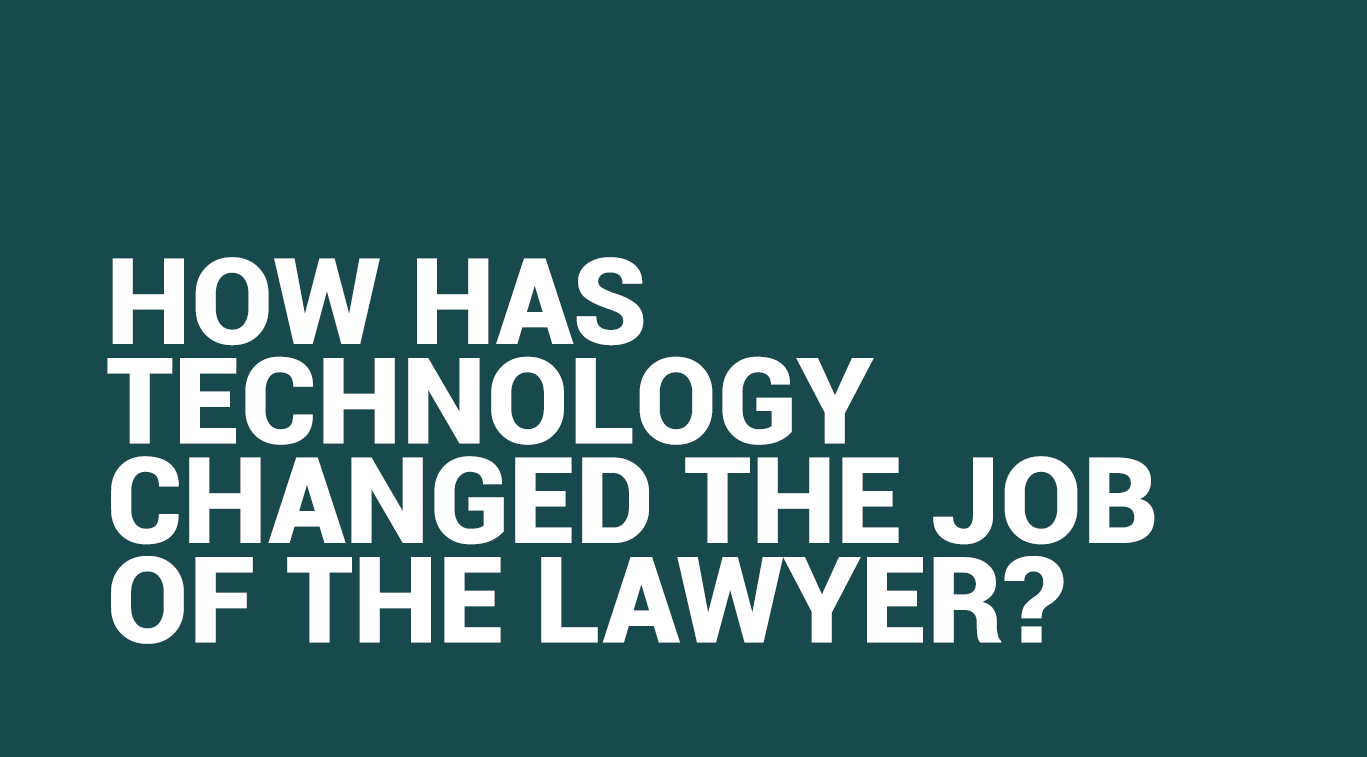Derivatives and Legal Technology

Written by Joshua Fraser
Blogger

The overall number of legal specialisms are, for most intents and purposes, virtually innumerable in number, intricate in nature, and, in many cases, highly esoteric. These specialisms range from the broad, yet essential, practice areas of family and criminal law to the niche and specific areas of intellectual property and media law. Amongst the considerable ranks of legal sector specialisms, one of the most financially significant, most frequently talked about and lucrative legal industry specialties is that of derivatives.
Derivatives are a (legal) cornerstone of the financial and banking industry and, by logical extension, are a staple of financial sector legal work. However, derivatives are salient for more reasons than just their linchpin status. They are quickly becoming a pain point for many banking and financial sector businesses. Derivatives, since the 2008 financial crisis, have become increasingly and aggressively regulated, a trend that gives no indication of slowing down. This regulation necessarily requires legal specialists to ensure compliance. This, so far, has been a good thing for derivatives lawyers and financial/commercial law firms, as the need for legal expertise and advice has generated an enormous amount of work and corresponding profit. However, instructing businesses in the UK are intending to slash legal budgets, on average, by 18%, while General counsel and legal departments are expecting 25% greater workloads in the next three years.
These realities mean that financial sector firms are seeking the fastest, most efficient, and comparably cheapest legal service providers to perform the necessary compliance tasks that are associated with the booming industry of derivatives, against a backdrop of increasing regulation. What this means is that a veritable arms race has evolved amongst firms providing legal advice and counsel to the finance sector. The firms that are most dynamic and cost-effective stand to win, and win big. When dealing with high-profile and high-priority banking and financial service clients, reputation is everything, the be-all, and end-all. This means that firms that provide stellar, fast, and comparatively cheap results, on a consistent basis stand to win contracts at a higher rate than their competitors. Crucially, the firms that achieve this premium first are the ones that will dominate the financial law market of the future.
This being said, achieving this level of efficiency is no mean feat, with a decreased budget and an increased workload. The driving factor that will likely make a disruptive difference in achieving this state is legal tech, which, correspondingly, is in an arms race of itself. Legal tech software’s ability to reduce financial overheads, and increase productivity and overall profitability will allow law firms working adjacent to the legal and banking sector to not only meet the current high demands of their financial sector clients but also to ambitiously strive to meet the potentially even more stringent future stipulations of their clients.
However, in order to understand how important derivatives are to the financial sector and global economy as a whole, as well as understand the relevance of legal tech innovation in re-shaping derivatives work, we must first run through derivatives 101 synopses.
What are Derivatives?
Derivatives straddle the line between being securities or being an asset class. They are a financial tool that contains an inherent value, in themselves, as well as a device for hedging risk or increasing risk (with a presumed and corresponding higher rate of return). This can seem confusing at first until you compare derivatives with the concept of pure security and a pure asset.
A mortgage is a pure security that, in itself, contains no value. Courts are strict in this regard, holding that there should be no clog or fetter on the ability of the borrower to redeem their mortgage. This reflects the fact that jurisprudence mortgages are recognised as a protection for an asset, not an asset in itself. It is loans, and their accompanying interest, that is secured/protected by the mortgage is the asset.
Derivatives are, in essence, a bet between two parties. Neither betting parties typically own the asset they are betting on, though the value of a given derivative is derived from the performance of the underlying asset. Usually, the risker the underlying asset the more the rate of return is from the derivative when the asset performs well; this is known as ‘speculation’.
On the flip side, derivatives can be used to hedge risk, acting, as aforementioned, almost like quasi-security. In this type of action, an investor will use a type of derivative, known as a ‘put option, to bet that a stock they hold will go down in value. This may seem counter-productive, as by holding a stock an investor (if acting bullishly) is typically betting that it will increase in price rather than decrease, in line with the ‘buy low, sell high wisdom of stock trading. It can be difficult to see, in this situation, how a derivative can function effectively to reduce risk. Sure, if the stock’s value falls then the derivative’s inherent value would increase, thus reducing the loss, or ‘exposure’, the investor is facing. However, by this logic, the derivative becomes less valuable when the stock increases in value and so reduces, assumedly in equal measure, the gain an investor stands to make.
This assumption would be wrong, as derivatives are not a straightforward asset class and so their value add (or corresponding loss) is not in lockstep with the assets they relate to. Take for example the ‘put option’ derivative type we just discussed. A put option gives buyers the right to sell, in entirely or a partial amount of, an underlying asset at a pre-determined price within a given time frame. This means that if the stock falls below a certain level the other party to the agreement must buy the stock. The other party is usually reimbursed for this prospective risk through a premium paid by the stock holding party. This strategy is known as a protective put and is essentially just insurance for stock trading. While the holder will lose money on the premium paid this is usually calculated to have a minor impact on their ultimate winnings on risky stocks, while the potential loss is vastly mitigated.
Derivatives, as shown in the example above, can function as security. As such, they can be created between two parties – or they can be traded in a fashion known as ‘over the counter – where a stock broker or dealer network trades the security (in this case the derivative) with buyers. This is where the treatment of derivatives blurs the line between security and an asset. The derivative has value in itself as it is sold or bought alongside the underlying asset or even free of the asset, with another asset substituted in to be sold to make up the shortfall of the overarching and existing asset.
Legal Technology & Derivatives
So how can legal work on derivatives be improved and enhanced by legal financial software?
Derivatives come in different types, one of the most prominent being swaps. Swaps are a derivative type, where two parties contract to exchange liabilities or certain cash flows to reduce cost or increase profit. These cash flows/liabilities range from interest rates to currencies and commodities. However, they also include credit defaults. This, controversial last option is essentially a bet by the buyer of the derivative that the underlying asset of the credit (loan) will not be defaulted on by the debtor. They step into the creditor’s shoes, assuming the risk, but are paid a premium by the creditor, who, in the event of a default, can offload their risk to the buyer of the derivative – who essentially assumes the role of an insurer.
The swaps are relevant as their quality is determined by ranked tranches. The credit defaults least likely to occur are ranked triple AAA and those least likely to default (read as risky loans) are usually in the CCD to DDD region. In 2008 these systems were made needlessly complex and intermingled to lead to a group of DDD credit default swaps being intermingled with a AAA tranche, with the classifying party dubbing, unrepresenttitively and inaccurately, as ABB or AAB. This, coupled with overly lax mortgage loan standards and thresholds, lead to a massive bubble of risk developing, as well as subsequent severe loss of confidence occurring in the housing market when this bubble burst.
Governments and independent bodies around the world, in an effort to prevent 2008 from occurring again, introduced heavy regulations to protect the sanctity and purity of default swaps and other derivatives. Lawyers and other legal staff are those best placed to undertake the copious due diligence and compliance work needed to ensure that financial sector businesses can make use of the financial tool of derivatives.
As with other instances of legal technology solutions, legal technology systems, such as smart contracts, blockchain tech, and legal artificial intelligence can serve to automate, secure, and enhance the practice of derivatives diligence.
At a glance, smart contracts, used as the basis for derivatives, can improve the accuracy and speed of derivatives (in practice a type of financial contract) agreements. Blockchain solutions can further authenticate and protect derivatives agreements to provide a potentially more efficient way for derivatives to comply with the current and prospective regulatory landscape. Finally, the workload at the granular level of diligence and compliance work, in the context of derivatives, can be reduced via automation and AI processes, meaning that regulatory teams can be smaller and more efficient than is currently the case.
In the manners listed above and more, legal technology can be utilised to meet the demanding+ challenges raised in the financial sector by regulation.
References:
[1] ‘Regulation and the derivatives markets’, at https://www.ft.com/content/833a0994-6e32-11df-ab79-00144feabdc0
[2] ‘How can regulation keep up as banking transformation races ahead’ at https://www.ey.com/en_gl/banking-capital-markets/keep-up-on-banking-regulation-during-transformation
[3] ‘Regulation in the derivatives market and how to navigate it’ https://unitedfintech.com/blog/regulation-in-the-derivatives-market/
[4] ‘The increasing world of regulation and compliance’, at https://www.lawgazette.co.uk/analysis/the-increasing-world-of-regulation-and-compliance/61062.article
[5] ‘A Basic Guide To Financial Derivatives’ at https://www.forbes.com/advisor/in/investing/derivatives/
[6] ‘Financial Regulations : What Do They Accomplish?’ at https://www.thebalancemoney.com/financial-regulations-3306234
[7] ‘An Analysis of the Regulatory Burden on Small Banks’ at https://sgp.fas.org/crs/misc/R43999.pdf
[8] ‘Evaluation of the Effects of Too-Big-To-Fail Reforms’ at https://www.fsb.org/wp-content/uploads/P010421-1.pdf
[9] ‘The impact of regulation’ at https://www.mckinsey.com/business-functions/strategy-and-corporate-finance/our-insights/the-impact-of-regulation
[10] ‘Lessons from the rapidly evolving regulation of digital banking’, at https://www.mckinsey.com/industries/financial-services/our-insights/lessons-from-the-rapidly-evolving-regulation-of-digital-banking








